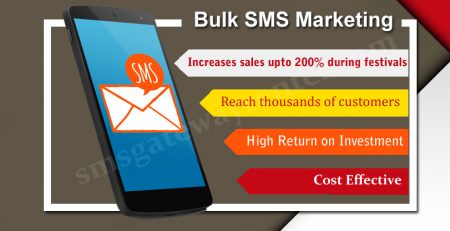B2B Marketing Strategies That Take Your Brand to the Next Level
This post highlights the best B2B marketing strategies that will take your brand to the next level. The complexity of B2B purchases presents a significant opportunity for marketers to make a positive impact. Streamlining the B2B buyer’s journey can lead to stronger connections with the target audience and increased conversions.
In the world of business-to-business (B2B) marketing, catering to the unique needs and complexities of businesses is paramount. Unlike B2C transactions, B2B purchases often involve multiple decision-makers, longer sales cycles, and intricate evaluation processes. Navigating this landscape requires a well-crafted strategy.
Reaching out to businesses requires a fundamentally distinct approach compared to engaging individual consumers. This is the premise behind a specialized marketing method known as B2B marketing. To assist you in enhancing your B2B marketing strategies. Here is a comprehensive guide that breaks down the essential aspects of B2B marketing that will help your company or brand.
What is B2B Marketing?
At its core, Business-to-Business (B2B) marketing is the art of promoting and selling products or services from one business to another. Unlike consumer-focused marketing (B2C), which targets individual customers, B2B marketing revolves around catering to the distinct needs of businesses and organizations.
B2B marketing involves a multifaceted approach tailored to the complexities of business transactions. From lengthy sales cycles and multiple decision-makers to the emphasis on delivering tangible value and addressing specific pain points, B2B marketing strategies are uniquely crafted to navigate these nuances.
Strategies within B2B marketing encompass personalized content creation, effective networking on professional platforms, targeted email campaigns, search engine optimization (SEO) for heightened visibility, and even collaborations with industry thought leaders. The goal is to foster trust, offer solutions, and build enduring relationships that go beyond the transaction.
10 B2B Marketing Strategies That Elevate Your Brand to New Heights:
#1. Segmentation and Personalization:
Understanding that business process management has diverse needs is key. Segment your audience based on industry, company size, and pain points. Develop targeted content and messages that address the specific challenges of each segment. Personalization enhances engagement and cultivates trust.
#2. Content as a Cornerstone:
Content is not just king; it is the foundation of B2B marketing success. Create high-quality, educational content that highlights your expertise. Blog posts, e-books, whitepapers, and webinars offer value to your audience, positioning your brand as a thought leader in the field.
#3. Leverage Social- Media for Networking:
Platforms like LinkedIn provide an avenue to connect with industry professionals, establish relationships, and share valuable insights. Craft content that sparks conversations, engages your audience, and positions your brand as a go-to resource.
#4. Harness the Power of Email Marketing:
Craft targeted email campaigns that cater to each stage of the buyer’s journey. Deliver valuable content that educates and guides prospects through their decision-making process. Email automation ensures timely follow-ups and consistent engagement.
#5. SEO for Visibility:
Optimize your website and content for relevant keywords. This ensures your brand appears in search results when businesses are seeking solutions. High-ranking content increases your brand’s credibility and attracts organic traffic.
#6. Account-Based Marketing (ABM):
Focus your efforts on high-potential accounts. Customize your marketing strategies to cater to the specific needs and pain points of these accounts. ABM fosters personalized relationships, leading to higher conversion rates.
#7. Influence through Thought Leaders:
Collaborate with industry influencers and thought leaders. Their endorsement and insights can expand your brand’s reach and enhance credibility within your target market.
#8. Data-Driven Decision Making:
Harness analytics to monitor the performance of your campaigns. Understand what works and what needs adjustment. Data-driven insights enable you to refine your strategies for optimal results.
#9. Seamless Sales-Marketing Collaboration:
Leverage CRM automation to foster a strong alignment between the sales and marketing teams, ensuring seamless communication and a unified approach to lead conversion.
#10. Lead Nurturing for Long-Term Relationships:
Acknowledge the extended duration of B2B sales cycles and employ sales automation to establish lead nurturing workflows. These workflows should consistently deliver value and guidance across the journey, effectively building trust and rapport along the way.
Elevate your brand’s presence, foster meaningful relationships, and position yourself as a trusted partner in your industry. As you implement these strategies, remember that adaptability and a customer-centric focus remain the cornerstones of B2B marketing excellence.
Key B2B Marketing Best Practices
- Deep Buyer Persona Understanding: Develop detailed buyer personas to grasp the challenges, motivations, and decision-making processes of your audience.
- Customer-Centric Approach: Frame your messaging around the benefits your product or service brings to the customer, addressing their pain points and providing solutions.
- Content Relevance: Ensure your content aligns with each stage of the buyer’s journey, offering educational content early on and transitioning to more detailed product information as it leads to progress.
- Data-Driven Decisions: Leverage analytics tools to track the performance of your campaigns. Refine your tactics according to data-driven observations to maximize outcomes.
- Multi-Channel Presence: Be where your audience is by maintaining a strong presence across various online and offline channels relevant to your industry.
- Nurturing Leads: Implement lead nurturing workflows that deliver relevant content to prospects over time, maintaining engagement until they are ready to make a purchase.
- Collaboration between Sales and Marketing: Utilize sales and marketing automation to foster close alignment between the sales and marketing teams, ensuring seamless communication and a unified approach to converting leads.
Comparison of B2C and B2B Marketing
Here are the differences between business to business marketing and business to customer marketing.
B2C (Business-to-Consumer) Marketing:
- Audience: Targets individual consumers who make purchasing decisions for personal use.
- Emotional Appeal: Focuses on evoking emotions, aspirations, and desires to influence buying decisions.
- Shorter Sales Cycle: Typically involves a shorter decision-making process, with fewer steps before purchase.
- Mass Advertising: Utilizes broad-reaching advertising channels like social media, television, and print media to capture consumers’ attention.
- Visual and Aesthetic: Places emphasis on eye-catching visuals, aesthetics, and lifestyle representations.
- Impulse Buying: Encourages impulse buying through limited-time offers, discounts, and appealing product presentations.
- Individual Preferences: Tailors marketing efforts to align with individual preferences, trends, and personal tastes.
- Brand Loyalty: Aims to build strong brand loyalty through memorable experiences and emotional connections.
- Direct Communication: Focuses on one-to-many communication, addressing a broad audience simultaneously.
- Examples: Retail products like clothing, electronics, cosmetics, and fast-food items.
B2B (Business-to-Business) Marketing:
- Audience: Targets businesses and organizations looking for products or services to enhance their operations.
- Logical Appeal: Focuses on practical benefits, cost savings, efficiency improvements, and ROI (return on investment).
- Longer Sales Cycle: Involves a longer decision-making process with multiple stakeholders and evaluation stages.
- Targeted Industry Platforms: Leverages industry-specific events, trade shows, and platforms to reach decision-makers.
- Informational Content: Prioritizes detailed and informative content such as whitepapers, case studies, and technical specifications.
- Informed Purchases: Buyers make informed decisions based on thorough evaluation, research, and comparison.
- Business Needs: Addresses specific business challenges and needs, offering solutions for improved operations.
- Trust and Credibility: Focuses on building trust, credibility, and strong professional relationships.
- Personalized Communication: Emphasizes one-on-one interactions, tailored to the unique requirements of each business.
- Examples: Software solutions, machinery, consulting services, and office supplies.
Understanding these distinctions is essential for crafting effective marketing strategies that resonate with the respective audiences.
In a Nutshell: B2B Marketing Strategies That Works
In the world of B2B marketing, understanding the complexities of the buying process is crucial. By implementing effective strategies and best practices, you can overcome these challenges and connect with your target audience on a deeper level.
Keep refining your approach based on data and feedback, and you will be well on your way to achieving B2B marketing automation success.
Remember, the goal is to make the B2B buying journey as smooth as possible for your prospects, establishing trust, and driving conversions.












Comment (1)
Nice post on b2b marketing, thanks for sharing.